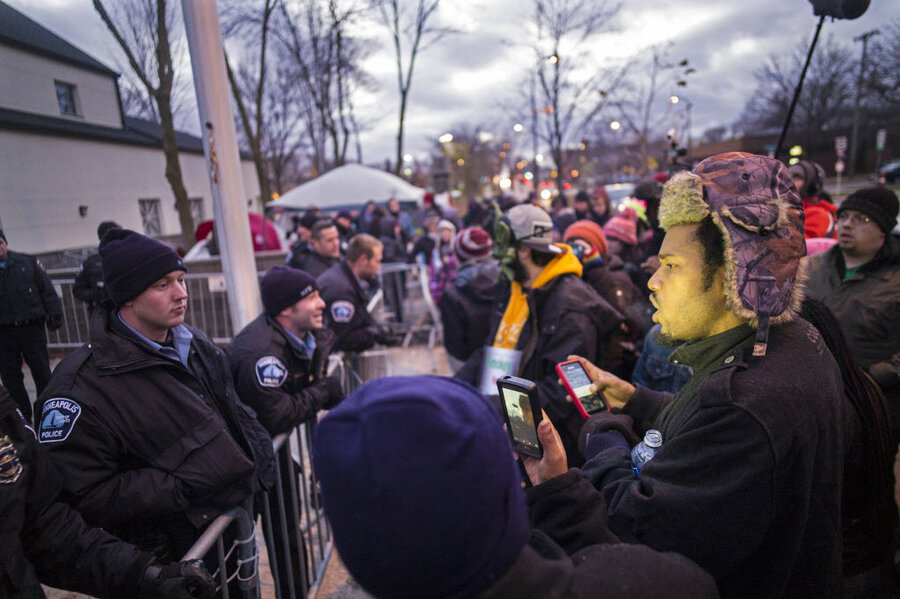Minneapolis police toe thin line during protests over black man's death
Loading...
While civil rights leaders are calling on Minneapolis police to practice use restraint in handling protesters, the police union head said they should become more rigorous after an evening of hostile face-offs over an officer's deadly shooting of a black man.
The divergent requests illustrate the impassioned feelings evoked just four days after Jamar Clark was shot in the head during a skirmish with two officers.
Police deployed a chemical irritant against demonstrators outside a north Minneapolis police station Wednesday evening where protesters have organized since the incident.
US Rep. Keith Ellison, a Minneapolis Democrat whose son Jeremiah appeared in a Star Tribute photo of an officer pointing some sort of weapon at protesters, tweeted a message in shock.
Police said the weapon fired non-lethal rounds of chalk that could be used to indicate law-breaking demonstrators, and spokesman John Elder said it was not directed at the congressman's son.
Officers said they had been hit with rocks, bricks, bottles, pepper spray, and Molotov cocktails, according to Police Chief Janee Harteau.
Chief Harteau said authorities would pursue arrests if they had evidence, but police union head Bob Kroll said more force should be used by removing tents that some protesters have erected by the north side’s 4th Precinct.
"It's chaos," Mr. Kroll told the Associated Press. "The officers are worn down ... [the protesters] should not have been allowed to pitch one tent, set one [on] fire, or block the entryway for one minute."
Meanwhile, president of the Minneapolis NAACP, Nekima Levy-Pounds, said police need to take a step back.
"It shows a militarization of the police force in the city of Minneapolis," Ms. Levy-Pounds told AP.
A law-enforcement think tank’s report on the Baltimore riots in April showed police departments across the country seem unprepared to manage the mass protests that now often follow controversial police shootings.
"Other police agencies across the country would be well-advised to check that they have kept up with training their officers and otherwise preparing for large-scale critical incidents, such as demonstrations that turn violent," the report read.
The Star Tribune reported that a gathering on Thursday night in Minneapolis was more peaceful. But the police department tweeted that after profanities were spray-painted onto the precinct facility, two men were arrested for preliminary charges of felony damage to property.
According to authorities, Mr. Clark was a suspect in an assault and interfered with paramedics tending to the victim. The Bureau of Criminal Apprehension, the state agency probing the incident, is examining claims that Clark was handcuffed at the time of the shooting. The Minneapolis police union leader said Clark placed his hands on an officer’s gun, while officials say they did not find any other weapons at the scene.
The NAACP has plans for a candlelight vigil and march at the station beginning at 4:30 p.m. on Friday to place more pressure on the Minneapolis Police Department.
NAACP national president Cornell William Brooks told reporters that Clark’s death "is one bad chapter in a bad national narrative of police conduct."
This report contains material from the Associated Press.





